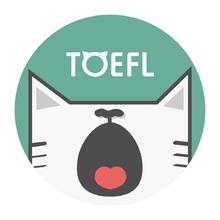 返回
教育头条
返回
教育头条

托福听力如何破解举例目的题
托福听力如何破解举例目的题,今天小编就给大家详细解读一下:
1 什么是举例目的题?
托福听力的出题,按照的划分,可以分成三种题型: Basic Comprehension questions基本理解题 Pragmatic Understanding questions 情景理解题 Connecting Information questions 整合信息题 一、种主要考察学员对主旨和重要细节的把握; 第二种考察语境理解,出现形式为态度题和重听题考察单句功能; 第三种难度递增,主要考察信息互联,如考察整合、推断, 进行预测、归纳总结、得出结论的能力,尤其是识别并解释观点和细节之间的联系,其中非常常见且难度不低的一种考察方式就是考举例目的。
2 举例目的题考什么?
Some Understanding Organization questions may ask you to identify or recognize how one statement functions with respect to surrounding text. Functions may include indicating or signaling a topic shift, connecting a main topic to a subtopic, providing an introduction or a conclusion, giving an example, starting a digression, or even making a joke. 几乎每篇听力都会碰到,大家很熟悉的经典问法如下: Why does the professor discuss X? Why does the professor mention X? 解析OG给的组织结构题定义,举例目的题核心的考法是考察信息互联;如果你留心观察过英文行文和写作方式,你会发现,举例是一种再常见不过的例证,属于supporting details,是对main point或major idea的支撑,而考察为什么提到这个例子,是非常精准的考察了例子和观点之间的关系。了解了举例目的题是什么,考什么之后,接下来我们来看看为什么这种题的难度在哪里,为什么容易错。
3 举例目的题为什么难?
来看TPO2-C1的一段原文: Student: Hmm . . . something just came into my mind and went out the other side. Professor: That happens to me a lot, so I’ve come up with a pretty good memory management tool. I carry a little pad with me all the time and jot down questions or ideas that I don’t want to forget. For example, I went to the doctor with my daughter and her baby son last week and we knew we wouldn’t remember everything we wanted to ask the doctor, so we actually made a list of five things we wanted answers to. Student: A notepad is a good idea. Since I’m so busy now at the end of the semester, I’m getting pretty forgetful these days. OK. I just remembered what I was trying to say before. 对话这一块出题点设置比较有趣,属于和主旨不直接关联的digression,师生从开篇一直在讨论学生的关于气候变化的research project, 但学生突然忘记了一个想问的问题,教授附和,说我也如此,所以我有一个“ good memory management tool”,会经常用一个pad来记下一些问题和想法,并举出上周带女儿和外孙去看医生之前列问题清单的例子,学生赞同主意好,表示近期忙很健忘,然后说突然想起刚才想问的问题。 学生初听这一块内容,是比较容易听到“I went to the doctor with my daughter and her baby son last week” 这个例子的,因为例子内容不难,词汇高频,以及例子中充斥着大量细节,容易听懂,也容易抓住学生的注意力,但是为什么听懂了例子,还有可能做不对题呢? 因为学生听材料,尤其听难度材料,在信息输入的过程中,往往因为生词、背景,或者语速的原因影响整合和理解,缺乏上下文串联的能力,容易导致听到什么就是/记什么,往往忽略了此类型题目考察的重点——听力材料中两个部分的关联。如果听到的内容碎片化,忽略了结构和逻辑,自然很难顺利推导出 “提到例子b是为了支撑观点a”。 听的时候,感觉自己听到了不少,做题的时候,看题干也可能有些印象,但是对于选出正确选项,听力的印象就非常模糊,感觉多个选项中都有自己听到的关键词,而混淆选项中往往会原词再现,从而导致学员错选(正确的选项经常有l同义替换)。

4 如何破举例目的题?
为大家推荐以下思路: 首先,了解此种类型的题目考察要点 其次,注意讲座结构划分,具体到每一段如何展开论证 接着,关注段落里的分论点和例证 然后,找到信号词/引导句,明确例子如何支撑观点 下面通过几个讲义的例子,为大家做进一步的解读: TPO2-L3 1 Why does the professor tell the man about the appointment at the doctor's office? To demonstrate a way of remembering things To explain why she needs to leave soon To illustrate a point that appears in his report To emphasize the importance of good health 解读: 观点:good memory management tool 例子:went to the doctor with… 信号词:for example 刚才我们说举例目的题考察信息互联,并不是单一的细节点,此处的题干the appointment at the doctor's office,在听力原文中是作为例证出现的,支撑了good memory management tool-我有好的记忆管理工具这个观点。这一部分内容,从结构上,游离于对话主旨之外,单独出题,在学员首遍听的时候,很容易抓不住与上下文之间关系,听到了例子,但没留意例子之前的观点,导致失分。 以上就是托福听力破解举例目的题的解析,希望对大家有所帮助。
1 什么是举例目的题?
托福听力的出题,按照的划分,可以分成三种题型: Basic Comprehension questions基本理解题 Pragmatic Understanding questions 情景理解题 Connecting Information questions 整合信息题 一、种主要考察学员对主旨和重要细节的把握; 第二种考察语境理解,出现形式为态度题和重听题考察单句功能; 第三种难度递增,主要考察信息互联,如考察整合、推断, 进行预测、归纳总结、得出结论的能力,尤其是识别并解释观点和细节之间的联系,其中非常常见且难度不低的一种考察方式就是考举例目的。
2 举例目的题考什么?
Some Understanding Organization questions may ask you to identify or recognize how one statement functions with respect to surrounding text. Functions may include indicating or signaling a topic shift, connecting a main topic to a subtopic, providing an introduction or a conclusion, giving an example, starting a digression, or even making a joke. 几乎每篇听力都会碰到,大家很熟悉的经典问法如下: Why does the professor discuss X? Why does the professor mention X? 解析OG给的组织结构题定义,举例目的题核心的考法是考察信息互联;如果你留心观察过英文行文和写作方式,你会发现,举例是一种再常见不过的例证,属于supporting details,是对main point或major idea的支撑,而考察为什么提到这个例子,是非常精准的考察了例子和观点之间的关系。了解了举例目的题是什么,考什么之后,接下来我们来看看为什么这种题的难度在哪里,为什么容易错。
3 举例目的题为什么难?
来看TPO2-C1的一段原文: Student: Hmm . . . something just came into my mind and went out the other side. Professor: That happens to me a lot, so I’ve come up with a pretty good memory management tool. I carry a little pad with me all the time and jot down questions or ideas that I don’t want to forget. For example, I went to the doctor with my daughter and her baby son last week and we knew we wouldn’t remember everything we wanted to ask the doctor, so we actually made a list of five things we wanted answers to. Student: A notepad is a good idea. Since I’m so busy now at the end of the semester, I’m getting pretty forgetful these days. OK. I just remembered what I was trying to say before. 对话这一块出题点设置比较有趣,属于和主旨不直接关联的digression,师生从开篇一直在讨论学生的关于气候变化的research project, 但学生突然忘记了一个想问的问题,教授附和,说我也如此,所以我有一个“ good memory management tool”,会经常用一个pad来记下一些问题和想法,并举出上周带女儿和外孙去看医生之前列问题清单的例子,学生赞同主意好,表示近期忙很健忘,然后说突然想起刚才想问的问题。 学生初听这一块内容,是比较容易听到“I went to the doctor with my daughter and her baby son last week” 这个例子的,因为例子内容不难,词汇高频,以及例子中充斥着大量细节,容易听懂,也容易抓住学生的注意力,但是为什么听懂了例子,还有可能做不对题呢? 因为学生听材料,尤其听难度材料,在信息输入的过程中,往往因为生词、背景,或者语速的原因影响整合和理解,缺乏上下文串联的能力,容易导致听到什么就是/记什么,往往忽略了此类型题目考察的重点——听力材料中两个部分的关联。如果听到的内容碎片化,忽略了结构和逻辑,自然很难顺利推导出 “提到例子b是为了支撑观点a”。 听的时候,感觉自己听到了不少,做题的时候,看题干也可能有些印象,但是对于选出正确选项,听力的印象就非常模糊,感觉多个选项中都有自己听到的关键词,而混淆选项中往往会原词再现,从而导致学员错选(正确的选项经常有l同义替换)。

4 如何破举例目的题?
为大家推荐以下思路: 首先,了解此种类型的题目考察要点 其次,注意讲座结构划分,具体到每一段如何展开论证 接着,关注段落里的分论点和例证 然后,找到信号词/引导句,明确例子如何支撑观点 下面通过几个讲义的例子,为大家做进一步的解读: TPO2-L3 1 Why does the professor tell the man about the appointment at the doctor's office? To demonstrate a way of remembering things To explain why she needs to leave soon To illustrate a point that appears in his report To emphasize the importance of good health 解读: 观点:good memory management tool 例子:went to the doctor with… 信号词:for example 刚才我们说举例目的题考察信息互联,并不是单一的细节点,此处的题干the appointment at the doctor's office,在听力原文中是作为例证出现的,支撑了good memory management tool-我有好的记忆管理工具这个观点。这一部分内容,从结构上,游离于对话主旨之外,单独出题,在学员首遍听的时候,很容易抓不住与上下文之间关系,听到了例子,但没留意例子之前的观点,导致失分。 以上就是托福听力破解举例目的题的解析,希望对大家有所帮助。
好了,以上就是托福听力如何破解举例目的题的介绍,如对本文有疑问或者想了解更多托福信息,请与我们联系,我的微信18560125702。教育宝是一家教培行业第三方平台,5年以上工作经验的学习顾问能给你最客观公正的建议,帮你辨别课程好坏,为你提供学习帮助。返回教育宝头条
【免责声明】本文仅代表作者本人观点,与教育宝无关。教育宝对文中陈述、观点判断保持中立,不对所包含内容的准确性、可靠性或完整性提供任何保证。请读者仅作参考,特此声明!





